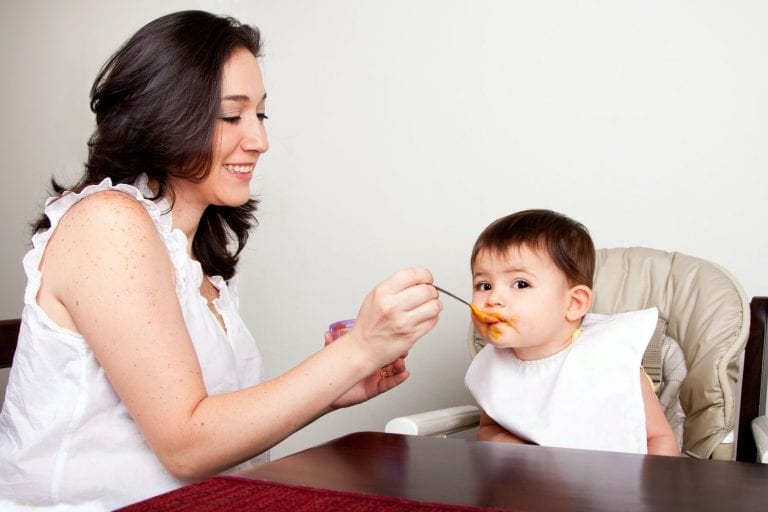Feeding Baby: The First Year
Feeding baby: From nursing to finger foods, here’s how to nourish your little one’s first 12 months.
As you settle into a nursing routine, you may be wondering when baby can start to eat other foods. Experts recommend babies be exclusively breastfed during the first 6 months before introducing other foods.
The American Academy of Pediatrics recommends breastfeeding for at least baby’s 1st year, and the World Health Organization recommends feeding babies breastmilk for the first 2 years of life. After that, both organizations say moms and babies should continue nursing for as long as they both want to do so.
Go the Distance
During baby’s first year, breastmilk should always be offered first—then other foods. Since baby only needs a few spoonfuls of these other foods, offer them only after nursing, allowing him to get the full value of breastmilk as his main meal.
As baby gets older, it’s natural for him to not nurse for as much or as often. Don’t worry, nursing is still giving your baby valuable nutrition and bonding time. In fact, you may find that your baby who used to nurse every 2-3 hours may taper down to 3-4 times a day. Eventually, you may only nurse during morning and bedtime routines.
Weaning 101
Take your cues from baby when weaning. Allow him to breastfeed for as long as he wants. There will come a point when he naturally spends less time at the breast. When he’s ready to wean, you can feel good that you’ve given him the healthiest start in life by giving him human milk and the natural closeness and bond that develops through nursing.
To begin, gradually replace 1 nursing each day with a bottle or sippy cup of breastmilk. Continue to replace nursing this way, weaning slowly, so that you can gradually decrease your milk supply without engorgement.
Feeding Baby: The First 12 Months
| Age | 4-6 Months | 6-9 Months | 9-12 Months |
| What she’s eating | Breastmilk | Primarily breastmilk; nurse before other foods are offered | Breastmilk + other foods |
| What to introduce | At 6 months, as baby shows interest, introduce pureed single-ingredient foods like banana, applesauce, pear, sweet potato, or rice cereal mixed with breastmilk | Pureed mixed ingredient foods, like apple-banana sauce or pureed meats; increase the texture as she seems interested in it | Finely chopped finger foods like graham crackers, soft fruits, pasta, cheese, or fork-mashed foods from your meals |
| What to watch for | Your baby can become constipated when you start solids. If this happens stop the food and increase nursing. Never add cereal to a bottle of breastmilk or feed cereal from a bottle | Emerging teeth; which allow you to begin to gradually increase the texture in foods. Choking is always a concern, so keep pieces small and odd-shaped, never tubular or round | Baby’s readiness to begin to self-feed; offer her small pieces of cheese, for example, and let her work on those fine motor skills in picking them up |
Feeding Baby: The First Year article is one of a group of articles we have to assist you in feeding your baby. Here are some related topics:
Colostrum as Baby’s First Food
Busting the Top 10 Myths About Breastfeeding
Breastfeeding Is the Best Option to Feed Your Baby
Why Is Your Baby Hungry All The Time?
Recognizing When Your Baby Has Gas
And do make sure that you look at our Feeding Your Baby and Breastfeeding sections where you will find many more articles that will be of interest.






Comments are closed.